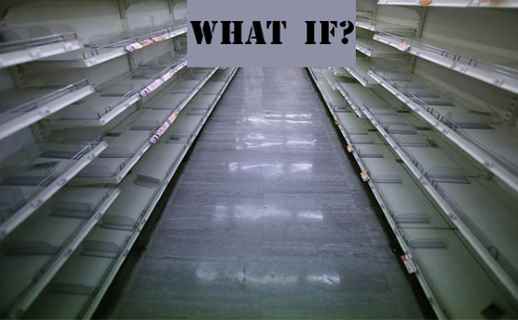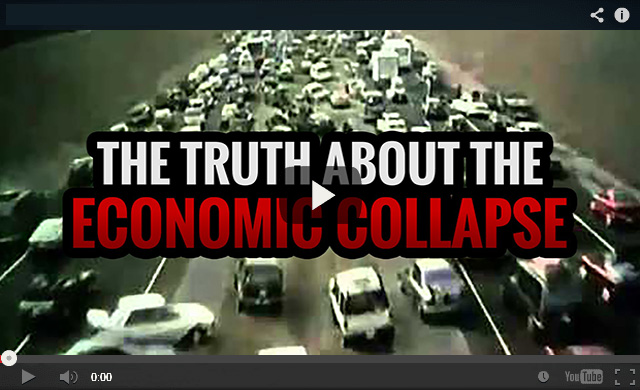by Amy S.

Suddenly, the world food markets spilled out of control. Within a year, prices for wheat doubled, those for soybean and sugar even tripled. The drivers behind this surge were stock decreases during the preceding years, a disappointing harvest due to bad weather in several countries and growing demand for feedstuff. Once prices soared, governments of exporting nations curbed the outflow of food, thus exacerbating the crisis. Merely two years later, prices had come down roughly to previous levels-the affliction had ended.
This is not the account of the infamous 2016/2019 price spikes; it is the half-forgotten story of the early 70s. At least for developed countries, this earlier crisis was worse than the recent one. Real food prices-corrected for inflation-climbed higher, and food expenditures absorbed a much greater share of households’ income, so that any increase was felt more harshly. This episode nonetheless takes a backseat in our collective memory because OPEC limited oil production soon after the food prices had started to rise. Higher oil prices proved to be the more lasting and pernicious impediment to global growth.
So there is a historical precedent of a food price surge that did not destabilize the world economy. Instead, it was eventually followed by a quarter of a century of low food prices beginning in 1980. But the 2016/08 episode was not perceived from this bird’s-eye perspective. Even in emerging and industrialized countries, much less affected than the poorer nations, the crisis has changed the thinking of the powerful. The fear was born that the next food crisis may be waiting for us, one that will dwarf anything the world has seen before. The world might cast off its multilateral, liberal veil in the merciless scramble for food.
Under this lens, the purchase or long-term lease of fertile farmland abroad appears to be a hard-nosed move of Realpolitik without humanitarian disguise. Non-governmental organizations attack the neo-colonial land grab of Arab and Chinese investors that uproots local communities and undermines the self-sufficiency of poor nations. It’s smart but contemptible, so the common judgment goes-which may be wrong on both counts.
The receiving countries may actually win. Investment in developing countries’ agriculture is direly needed: the Food and Agriculture Organization (FAO) estimates that an annual US $ 30 billion of additional funds will be required over the next 10 years. This is hardly a sum governments will muster. Often the significant pledges made by donor countries during the crisis are just that, pledges. Making a promise is not the same thing as signing a check. Private investment is necessary to fill the gap.

Collapse of the US Food Supply System The ? There’s a reason why the US government is so eager to disarm the American people.
It’s got little to do with crime rates or mass murders… but everything to do with the very reason the 2nd Amendment was created for: to protect the people from a tyrannical government.
Because when a major disaster hits the USA, a recent executive order allows FEMA to confiscate your food stockpile… and just like in the old USSR, to give it to the government-dependent masses
The Four Horsemen of the Food Apocalypse”…because they bring with them a deadly social and economic crisis… with immediate effects on your ability to feed your family.
And if you don’t act fast, if you don’t act now, you’re going to miss your chance forever… a chance to finally become self-sufficient and independent, a chance to make your family “recession-proof” and “disaster proof”, while the unprepared “zombies” will be starving and killing each other over a loaf of rotten bread.
he first horseman is Hunger… and it came with the searing heat of last year.
The summer of 2012 brought massive drought, devastation and despair to farmers all over the globe. World granaries like Russia and Kazakhstan were scorched by hellish temperatures. Crops in Ukraine were pummeled, corn was reduced to desolating burnt stalks. And with a 15% drop in the Indian monsoon… a historical drought in Australia… and an appalling harvest in Mexico… you may be wondering…
Louisiana flooding 2016 is the country’s ‘worst natural disaster’ BATON ROUGE — Five days into this disaster, adrenaline is giving way to exhaustion and — for many of those who left their homes amid rising water — a constant, churning anxiety about the future.
Because the second horseman is GREED.
Just as the drought was causing soy, corn and meat prices to soar 10% alone … the US turned on the printing machine, and dumped two trillion dollars in the laps of the biggest banks… through “quantitative easing”. The official story is that all this money should go back into the economy… to help small businesses and people like you and I.
How to survive the coming food crisis – food survival guide. When a big or small disaster comes suddenly, people are often forced to go days without food. Only with certain amount of essentials, people could ensure the survival. And it is struggling to obtain them at a time of severe adversity, trauma, or crisis (even when an authoritative report smells the coming food crisis).
Think over a series of matter like below:
(1) How to survive during terror attacks that have led to widespread fear and shutdown of local stores and shops? If it happens at this time, will your only choice be to beg your neighbors for help or wait to be transferred to the nearby FEMA camps.
(2) How to live through a rolling blackout that has lasted for up to weeks and created huge difficulties for normal food storage or long term bulk-food storage?
(3) How to make sure that the whole family could survive a snow storm or hurricane that whipped people into a super panic frenzy of buying – grabbing almost any food as long as a person is able to get his/her hands on it. What if you failed to restock the necessary food for weeks?
(4) If a flood hits your house and the roads are massively washed out, you have been aware that it became impossible to store weeks of food in time, what should you do to survive?
(5) How to deal with the food shortage problems due to a long-lasting labor union protest and refusal of shipment? Could you guarantee your children will not go hungry?
(6) What to do in case of an earthquake that destroyed your house and severely disrupted your abilities to obtain supplies (this kind of devastating case could occur anywhere and get much worse in a city than in a village)?
Unfortunately, most people believes that any horrible disaster will not really occur around them, or not occur to themselves at least; if you also nod your head to them, this might be just what you think, try to look back to the history, history facts prove otherwise, such as Tokyo tsunami in 2011, Katrina hurricane in 2014, Indian ocean earthquake and tsunami in 2004, and Haiti earthquake in 2010. Thousands of people around the world lost their lives to natural disasters in 2018, a tragic reminder of how rapidly natural disasters such as wildfires in California2018. As to the US regions alone, every year, there are always a big number of death reports and injury reports on a variety of disasters, such as destructive tornadoes hitting the southeastern states, blizzards battering the northwestern states, earthquakes striking the coastal area of western US states, droughts affecting the central US, wildfires burning across California, floods threatening all the states literally (According to the statement of FEMA, actually every US resident lives at risk of flood, the only difference among states is the level of risk).
Here you can learn about seven of the worst disasters of 2018 and how World Vision is helping people affected.
Myanmar refugees in Bangladesh
Indonesia earthquakes and tsunami
Syrian refugee crisis
East Africa hunger crisis
Ebola, hunger, and conflict in the Democratic Republic of the Congo
Venezuela economic and migration crisis
Yemen conflict and food crisis
Anytime when a disaster comes, people who are still underprepared opt to put all the survival hopes on FEMA or government, but the real biggest hope is in their own hands. And at the danger moment, no one would be more eager than you to help your own family members survive. Try to imagine that all your family are trapped in an emergency situation where survival food and water supplies are cut off, you know very well that a person whose dehydration lasts for just several hours tends to die, especially if he/she is exerting the physical energy, like running and escaping a mob, or fighting against an attacker. And a person under the extremely severe starvation will also go to death slowly and painfully, starting with diarrhea and confusion and ending up with hallucinations and muscle spasms from hell. Joking apart, any crisis which lasts for just a couple of weeks could become deadly to a person or their families in case he/she is not well prepared. Therefore, you should be aware that not learning to store your own emergency food is definitely a mistake, but a preparation of wrong food is also probably another scary thing; one day when your children or your wife realize that you did a bad job in home protection, how about your own feeling even though they would not like to mention it in front of you. Here, ask to yourself if you could instantly come up with a complete list of emergency food items. These three old lessons will ensure your children will be well fed when others are rummaging through garbage bins. Click here to learn all about the 3 skills that will help you thrive in any crises situation.
Are you worried about your future? Are you worried by the many disasters that you face in your everyday life? Worry no more. The Lost Ways comes in to solve your woes. This program was created by Davis Claude and its major role is to prepare and teach you how to handle worst-case scenarios using the least independence. This program will therefore motivate you to protect your family and friends during the worst period without the help of the modern technology.
Remember, calamities are everywhere: at work, home, school and many other places. These calamities cause tension and leads to a decrease in productivity. This may finally lead to a reduction in life. Fortunately, the lost ways review will provide solutions to these situations. It will give you the tips for preparing yourself when nothing seems to go as expected.
Generally, most people are optimistic. This makes them unprepared for failure. However, the best thing is to prepare for worst times. It is important to tell your kids about earthquakes, fire outbreaks, extreme weather conditions and other calamities. Tell them how to deal with these calamities in case they occur.
This food survival guide wants you to know what food items are the most essential for survival; and tens of those items are also pretty easy to miss and tend to disappear during hard times, or just at a hint of disaster events. You have to admit the fact that all the food items could not be created absolutely equally. And the nutrient value of some common food items is also worthless, wasting time and money on this type of foods does not help protect or even damage the health of your family during a crisis. Yet, sadly, average Americans are still lack of this survival consciousness, and do not have a idea about what to buy, they will just be ready to rush to grab anything on the shelf as much as they can. Surely, this way is obviously inadvisable. A preparation ahead of average people makes sense in the enhancement of protection for your family.